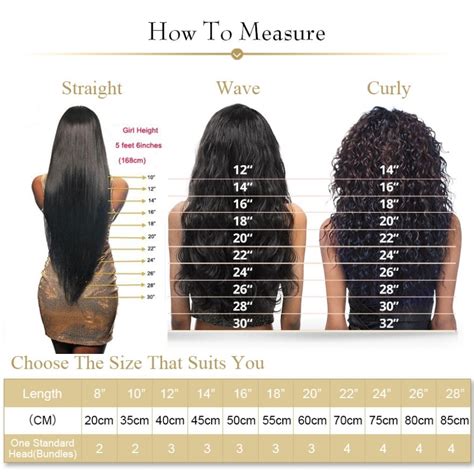Introduction

Tracking your hair growth is crucial for maintaining healthy, strong hair. The hair inch chart provides a visual representation of your hair’s length and helps you set realistic goals for growth and maintenance.
Hair Growth Rate
According to the American Academy of Dermatology, hair typically grows about 6 inches per year, or 0.5 inches per month. However, factors such as genetics, diet, and overall health can influence the growth rate.
Hair Inch Chart
| Inch | Length | Measurement |
|---|---|---|
| 1 | 2.54 cm | From root to tip |
| 2 | 5.08 cm | Eyeliner cap length |
| 3 | 7.62 cm | Standard paperclip length |
| 4 | 10.16 cm | Thumb to first knuckle |
| 5 | 12.7 cm | Fingers to first knuckle |
| 6 | 15.24 cm | Palm to first knuckle |
| 7 | 17.78 cm | Chin length |
| 8 | 20.32 cm | Shoulder length |
| 9 | 22.86 cm | Mid-back length |
| 10 | 25.4 cm | Lower-back length |
| 11 | 27.94 cm | Waist length |
| 12 | 30.48 cm | Tailbone length |
Applications
Besides tracking growth, the hair inch chart has various applications:
- Hair Styling: Determine the ideal length for different hairstyles, such as bob, pixie cut, or long layers.
- Product Selection: Choose products designed for specific hair lengths to maximize their effectiveness.
- Scheduling Trims: Identify the optimal time for trims based on desired length and split end accumulation.
- Hair Donations: Measure donated hair length to meet organization requirements.
Strategies for Hair Growth
- Nourish: Eat a balanced diet rich in protein, biotin, and vitamins A and C.
- Moisturize: Use leave-in conditioners and hair masks to hydrate and strengthen hair.
- Detangle Gently: Use a wide-toothed comb and detangling spray to minimize breakage.
- Massage: Scalp massages stimulate blood flow, promoting hair growth.
- Trim Ends: Regularly trim split ends to prevent them from traveling up the hair shaft and causing breakage.
Common Mistakes to Avoid
- Over-Washing: Frequent washing can strip hair of natural oils, leading to dryness and breakage.
- Hot Styling: Excessive heat from blow-drying, straightening, or curling can damage hair and inhibit growth.
- Chemical Treatments: Harsh chemical treatments, such as relaxers and bleach, can weaken hair and cause breakage.
- Tying Hair Too Tightly: Tight ponytails or braids can put stress on hair follicles, leading to hair loss.
- Stress: Chronic stress can contribute to hair loss and slow down hair growth.
Conclusion
The hair inch chart is an invaluable tool for monitoring hair growth and achieving your hair goals. By following effective strategies and avoiding common mistakes, you can maintain healthy, luscious locks that you’ll love. Remember, hair growth is a journey, and with patience and care, you can achieve the length and health you desire.
Additional Tables
-
Hair Length Classifications:
| Classification | Length |
|—|—|
| Short | 0-4 inches |
| Medium | 5-10 inches |
| Long | 11+ inches | -
Hair Porosity Chart:
| Porosity Level | Hair Characteristics |
|—|—|
| Low Porosity | Does not absorb moisture easily |
| Medium Porosity | Absorbs moisture moderately |
| High Porosity | Absorbs moisture quickly and loses it easily | -
Hair Type Chart:
| Hair Type | Characteristics |
|—|—|
| Straight | No natural curls or waves |
| Wavy | Loose, gentle waves |
| Curly | Defined, tight curls |
| Coily | Springy, tightly coiled curls | -
Scalp Type Chart:
| Scalp Type | Characteristics |
|—|—|
| Oily Scalp | Produces excess oil |
| Dry Scalp | Lacks moisture |
| Normal Scalp | Maintains a balanced oil production |
